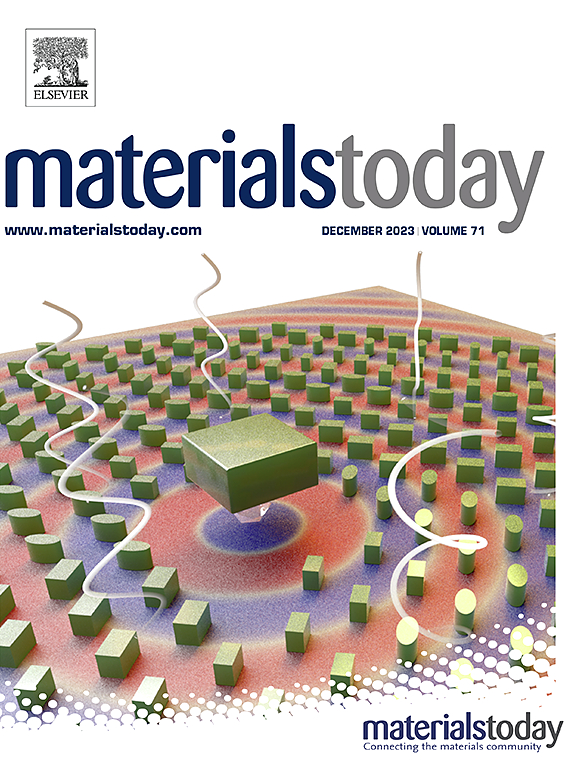高能量密度钠基NASICON阴极中打破V4+/V5+氧化还原势垒的电荷重构
IF 21.1
1区 材料科学
Q1 MATERIALS SCIENCE, MULTIDISCIPLINARY
引用次数: 0
摘要
Na4FeV(PO4)3 (NFV)是一种钠离子电池(sib)用钠超离子导体(NASICON)结构的正极材料。然而,如何在高压区域稳定V4+/V5+氧化还原反应,提高载流子输运率是目前最大的挑战。本文提出了一种新颖的电荷重构工程,通过在Fe位点引入富电子Ti来优化V-O键的电荷转移,提高载流子输运率。这样就打破了V4+/V5+氧化还原的屏障,同时实现了V4+/V5+氧化还原在高压区域的活化和稳定。此外,高压区V4+/V5+氧化还原平台的显著延长有助于提高容量,从而显著提高能量密度(最高可达NFV的1.6倍)。所提出的电荷重构工程将为高性能sib阴极材料的制备开辟一条新的途径。本文章由计算机程序翻译,如有差异,请以英文原文为准。
Charge reconfiguration for breaking the V4+/V5+ redox barrier in sodium-based NASICON cathode with higher energy density
Na4FeV(PO4)3 (NFV) is a Na-super-ionic conductor (NASICON)-structured cathode material for sodium-ion batteries (SIBs). Nonetheless, how to stabilize the V4+/V5+ redox reaction in the high-voltage region and enhance the carrier transport rate are the biggest challenges at present. In this paper, an innovative charge reconfiguration engineering is pro-posed to optimize the charge transfer of the V-O bonds and enhance the carrier transport rate by introducing electron-rich Ti at the Fe site. In this way, the barrier of V4+/V5+ redox is broken, which enables the activation and stability of V4+/V5+ redox in the high-voltage region to be achieved simultaneously. Furthermore, the significantly lengthened V4+/V5+ redox plateau in the high-voltage region contributes superior capacity, leading to a remarkably increased energy density (up to 1.6 times that of the NFV). The proposed charge reconfiguration engineering will create a new avenue for fabricating high-performance cathode materials for SIBs.
求助全文
通过发布文献求助,成功后即可免费获取论文全文。
去求助
来源期刊

Materials Today
工程技术-材料科学:综合
CiteScore
36.30
自引率
1.20%
发文量
237
审稿时长
23 days
期刊介绍:
Materials Today is the leading journal in the Materials Today family, focusing on the latest and most impactful work in the materials science community. With a reputation for excellence in news and reviews, the journal has now expanded its coverage to include original research and aims to be at the forefront of the field.
We welcome comprehensive articles, short communications, and review articles from established leaders in the rapidly evolving fields of materials science and related disciplines. We strive to provide authors with rigorous peer review, fast publication, and maximum exposure for their work. While we only accept the most significant manuscripts, our speedy evaluation process ensures that there are no unnecessary publication delays.
 求助内容:
求助内容: 应助结果提醒方式:
应助结果提醒方式:


